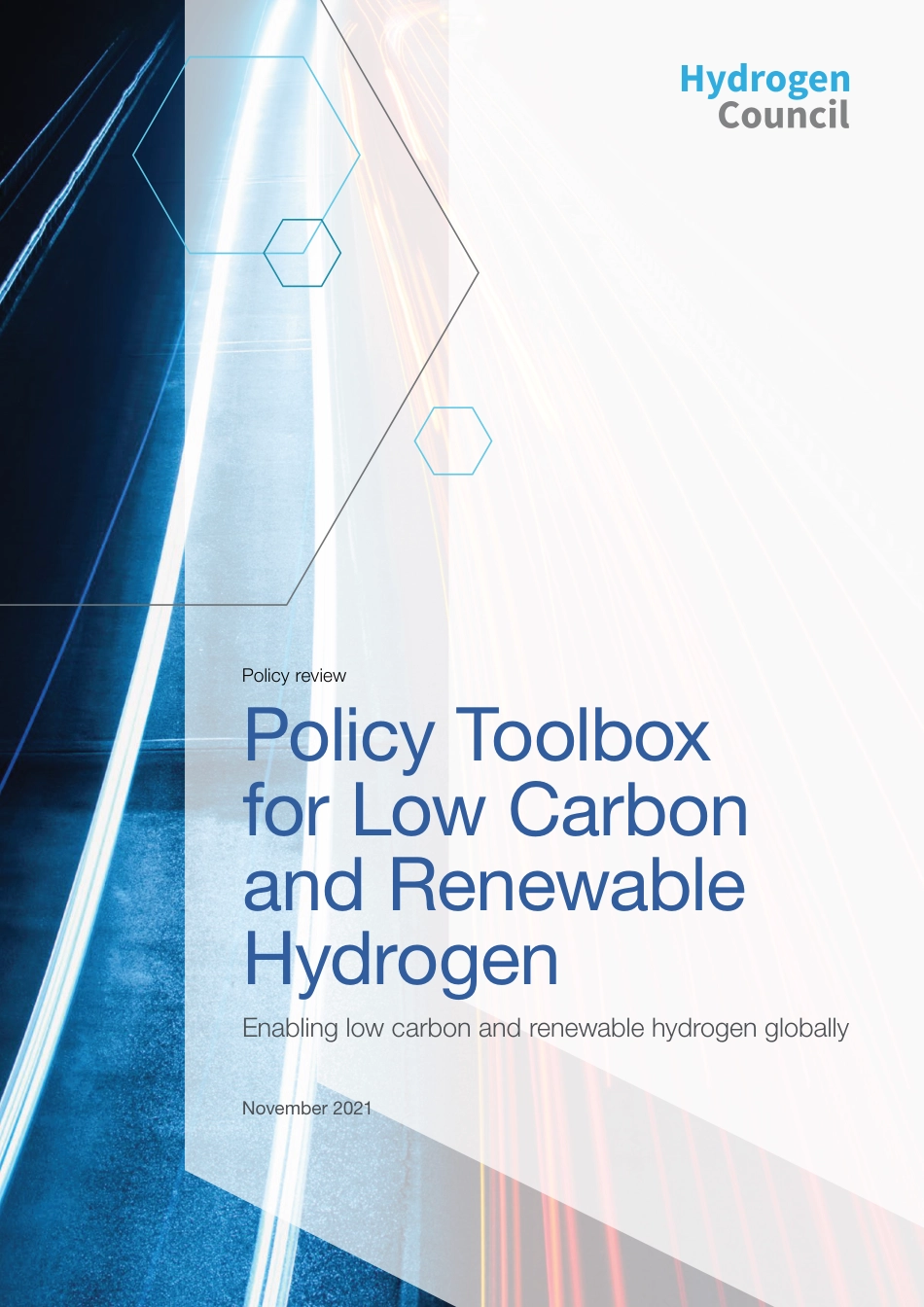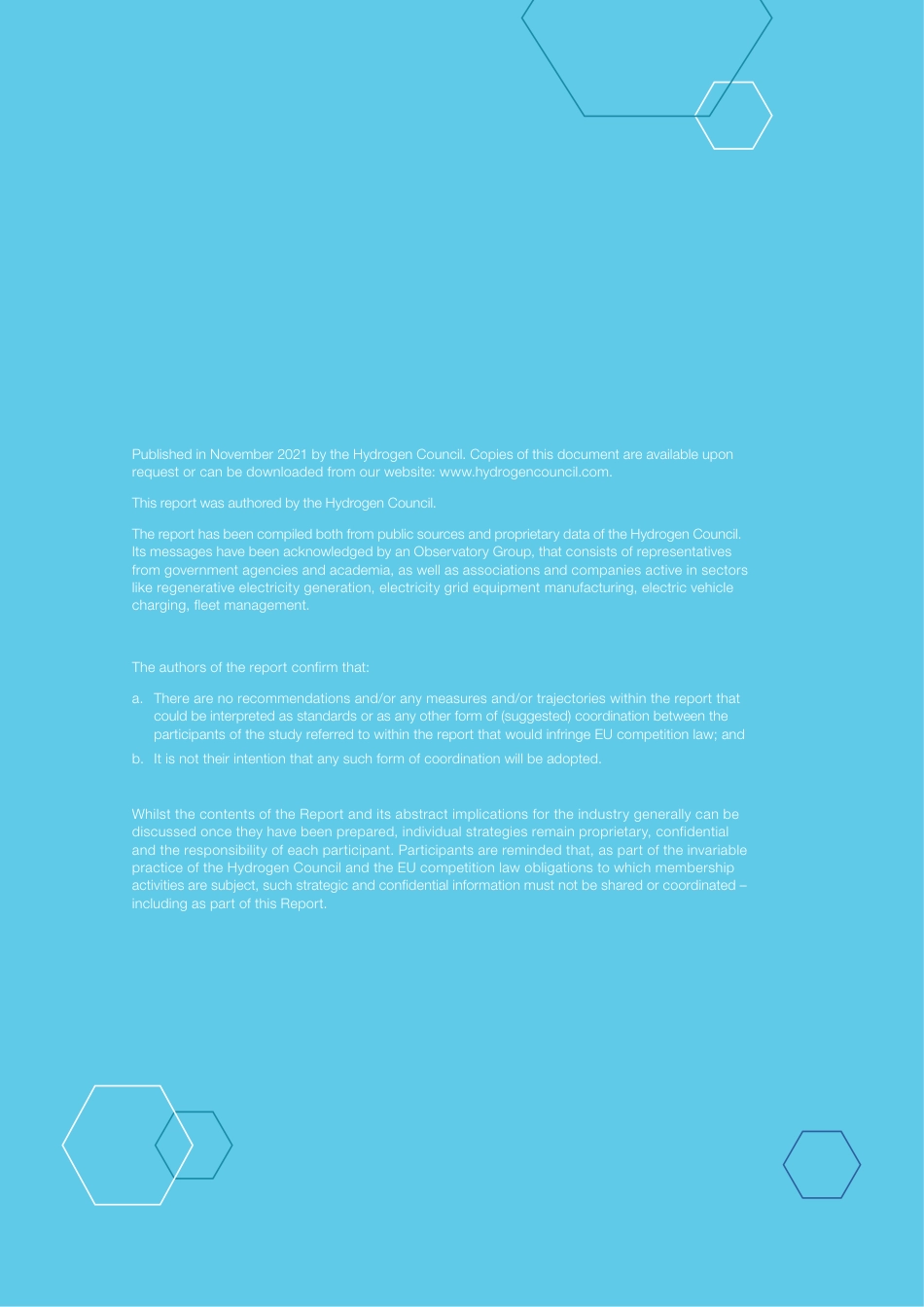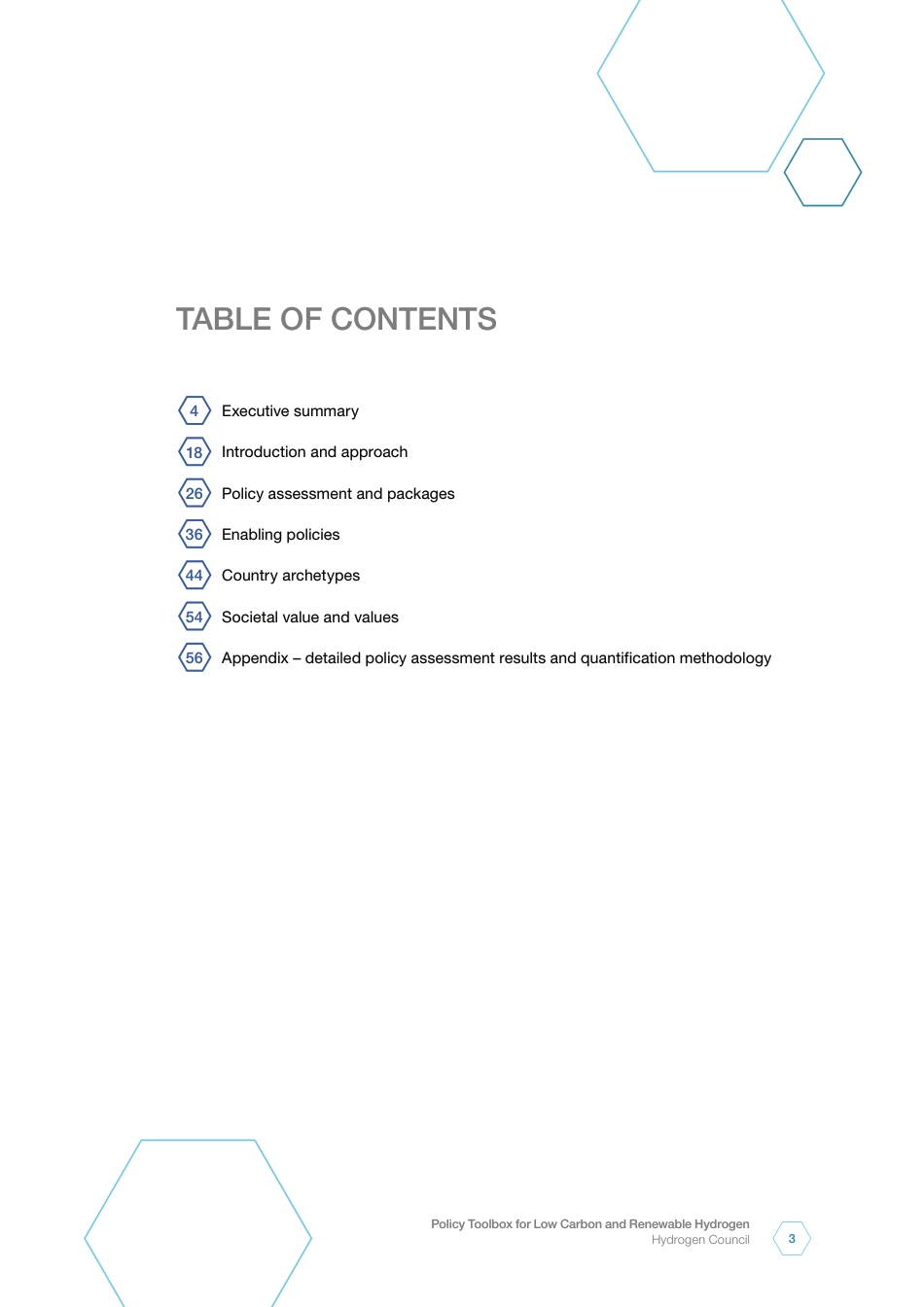Policy reviewPolicy Toolbox for Low Carbon and Renewable HydrogenEnabling low carbon and renewable hydrogen globallyNovember 2021Published in November 2021 by the Hydrogen Council. Copies of this document are available upon request or can be downloaded from our website: www.hydrogencouncil.com. This report was authored by the Hydrogen Council.The report has been compiled both from public sources and proprietary data of the Hydrogen Council. Its messages have been acknowledged by an Observatory Group, that consists of representatives from government agencies and academia, as well as associations and companies active in sectors like regenerative electricity generation, electricity grid equipment manufacturing, electric vehicle charging, fleet management.The authors of the report confirm that: a. There are no recommendations and/or any measures and/or trajectories within the report that could be interpreted as standards or as any other form of (suggested) coordination between the participants of the study referred to within the report that would infringe EU competition law; and b. It is not their intention that any such form of coordination will be adopted. Whilst the contents of the Report and its abstract implications for the industry generally can be discussed once they have been prepared, individual strategies remain proprietary, confidential and the responsibility of each participant. Participants are reminded that, as part of the invariable practice of the Hydrogen Council and the EU competition law obligations to which membership activities are subject, such strategic and confidential information must not be shared or coordinated – including as part of this Report.TABLE OF CONTENTSExecutive summaryIntroduction and...



